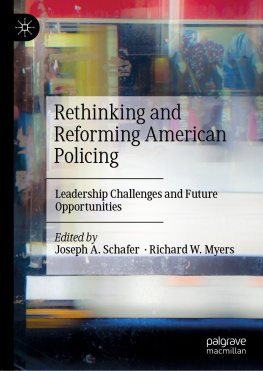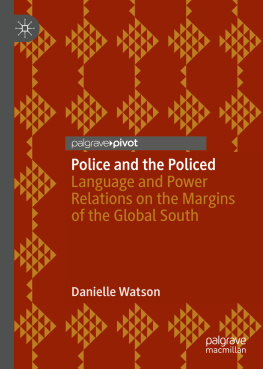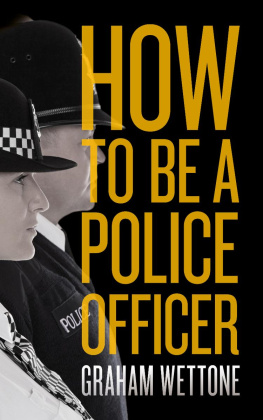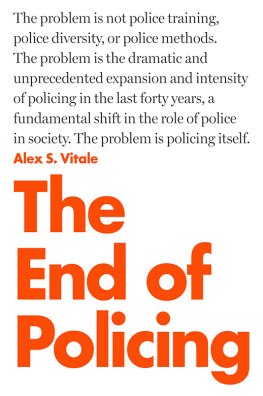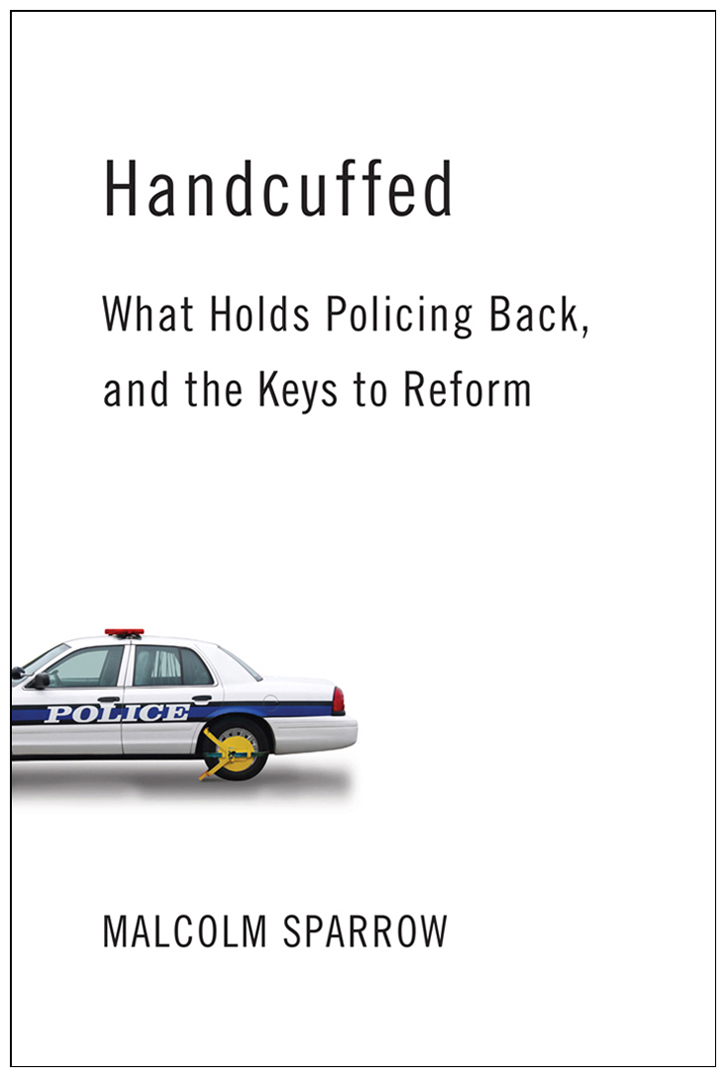T he police shooting of an unarmed young black man in the St. Louis suburb of Ferguson, Missouri, in August 2014 sparked riots and the beginning of a national conversation on race and policing. Much of the ensuing discussion has focused on the persistence of racial disparities and the extraordinarily high rate at which American police kill civilians (an average of three per day).
Malcolm Sparrow argues that other factorscritical flaws in the more general development of police theory and practice over the last twenty-five yearshave substantially contributed to the current crisis in American policing.
Sparrow shows how the reform ideas of community and problem-solving policing, adopted as conventional policing wisdom by the 1990s, have failed to thrive. Many departments give these ideas mere lip-service and still define their success by narrow quantitative metricstallying up traffic tickets issued, or arrests made for petty crimes. They focus closely on official but unreliable crime statistics while exercising inadequate control over policing tactics and style.
Sparrow says police must escape their narrow focus and perverse metrics and turn back to making public safety and public cooperation their primary goals. Police departments, he argues, are fundamentally in the business of risk-control and harm-reduction, with profound implications for policing strategy, methods, measurements, analysis, and the nature of community interactions.
Handcuffed

Copyright 2016
THE BROOKINGS INSTITUTION
1775 Massachusetts Avenue, N.W., Washington, D.C. 20036
www.brookings.edu
All rights reserved. No part of this publication may be reproduced or transmitted in any form or by any means without permission in writing from the Brookings Institution Press.
The Brookings Institution is a private nonprofit organization devoted to research, education, and publication on important issues of domestic and foreign policy. Its principal purpose is to bring the highest quality independent research and analysis to bear on current and emerging policy problems. Interpretations or conclusions in Brookings publications should be understood to be solely those of the authors.
Library of Congress Cataloging-in-Publication data are available.
ISBN 978-0-8157-2782-8 (epub)
9 8 7 6 5 4 3 2 1
Typeset in Adobe Caslon and ITC Officina Sans
Composition by Elliott Beard
Table of Contents
Guide
Contents
This book should properly be regarded as one more product of the Executive Session on Policing and Public Safety, a collaboration between the National Institute of Justice (NIJ) and the Program on Criminal Justice Policy and Management at the Harvard Kennedy School. Over the course of six years, from 2008 to 2014, a group of leading police chiefs and a handful of academics and others met twice yearly to debate the theory and practice of policing, and to see what we could do collectively to advance the development of the profession. The Executive Session generated a total of twenty-three papers, published jointly by Harvard and NIJ, as the New Perspectives in Policing series.
I am grateful to all the members of the Executive Session for their commitment to this process and the extraordinary range of experience and insights that they brought to the table. I wont name them all here, as they are all named on every paper published in the New Perspectives series.
I had the special pleasure of working on the steering committee, whose task was to identify critical themes, plan the Executive Session meetings, manage the portfolio of papers commissioned to make sure important areas were covered, and act as the editorial board for the papers published. I am particularly grateful to the other members of this steering groupChris Stone, Thom Feucht, Christine Cole, Darrel Stephens, Anthony Braga, Sean Smoot, Brian Welch, and Brett Chapmanfor the many hours of rich and challenging conversations we shared in the course of that work. Through them I felt reconnected with the profession in a way I had not for some fifteen years, and was privileged to benefit from their vast knowledge of the field and collective insight into current developments.
Special thanks to NIJ for granting permission for me to reuse some of the material from the four papers I authored in the New Perspectives series. Thanks also to the American Society of Criminology for permission to include in this volume an adapted version of my paper Crime Control through a Regulatory Strategy: Joining the Regulatory Fold, which was first published in Criminology & Public Policy in May 2012.
Throughout this volume I have cited many of the other New Perspectives papers, drawing particularly heavily from those written by Anthony Braga, Charles Ramsey, and David Sklansky, because these most closely aligned with the core theme of this bookthe need to re-examine the foundational ideas of community and problem-oriented policing and to work out what has impeded the development of those ideas over the last twenty-five years and prevented them from reaching maturity.
Malcolm K. Sparrow served ten years with the British Police Service, rising to the rank of Detective Chief Inspector. He has conducted internal affairs investigations, commanded a tactical firearms unit, and has extensive experience with criminal investigation. He is currently professor of the Practice of Public Management at Harvards John F. Kennedy School of Government and faculty chair of the schools executive programStrategic Management of Regulatory and Enforcement Agencies. A mathematician by training, he is a patent-holding inventor in the area of automated fingerprint identification systems (AFIS). He holds an MA in mathematics from Cambridge University, an MPA from the Kennedy School, and a PhD in applied mathematics from Kent University at Canterbury.
These are tumultuous times for policing in America. Thanks in part to the almost ubiquitous presence of video cameras, the American public has recently had the chance to see the very best and the very worst of police conduct.
At the scene of the Boston Marathon bombings on April 15, 2013, Boston police officers and other emergency workers instinctively ran toward the site of the explosions to help the injured and take control of the scene, even while nobody knew how many more bombs there might be. Video footage made plain to all the classic courage of first responders reacting to a traumatic situation with professional discipline and putting their own lives at risk for the sake of the public they serve.
Three days later, on April 18, MIT patrol officer Sean Collier was shot dead in his patrol car by bombing suspects Dzhokhar and Tamerlan Tsarnaev, who were apparently seeking to acquire weapons and perhaps provoke a major confrontation with police. In an extraordinary display of public appreciation for police officers and the dangers they face on a daily basis, more than 10,000 people attended Officer Colliers funeral.
On April 19 Tamerlan Tsarnaev was killed during a gun battle with police in the streets of Watertown, Massachusetts. He had been shot several times by police and then run over by his brother, who was fleeing in a stolen SUV. One MBTA police officer was shot and nearly died from blood loss. The surviving brother, Dzhokhar Tsarnaev, was found later hiding in a boat in the backyard of a Watertown home and apprehended.
Scores of law enforcement officers from federal, state, and local agencies had flooded into the area and cooperated in the search. When it was all over, local residentswho had voluntarily heeded the police request to shelter in placeemerged from their homes, gathered on street corners, and spontaneously applauded as buses full of law enforcement officers passed by.


